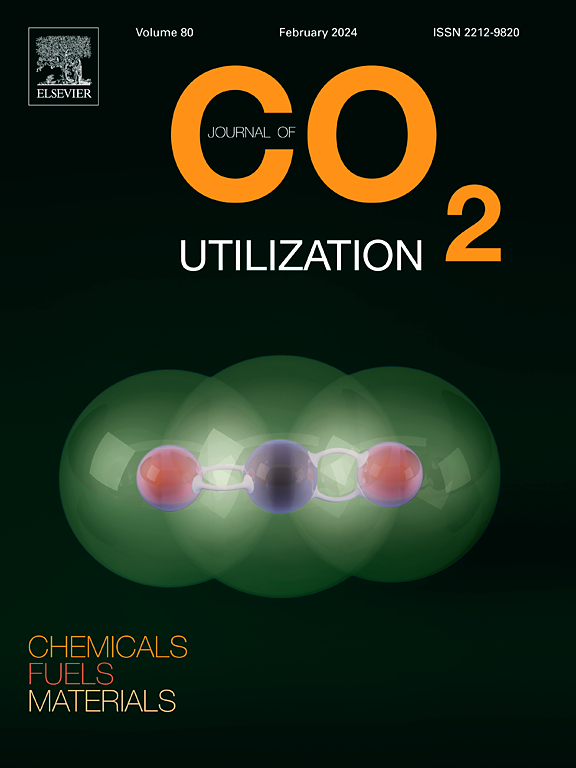Unlocking CO2 methanation potential of mesoporous Ni-MCM-48
IF 8.4
2区 工程技术
Q1 CHEMISTRY, MULTIDISCIPLINARY
引用次数: 0
Abstract
CO2 methanation is a significant pathway to store excess energy produced in power-to-gas systems. While the process has received much attention, low-cost heterogeneous catalysts with high efficiency and stability for selective CO2 conversion are a highly desired research pursuit. Herein, we report the direct synthesis of Ni-substituted highly ordered 3D mesoporous MCM-48 silica (Ni-MCM-48) with a well-ordered porous structure and high specific surface areas (748–1092 m2 g−1). The substitution of Ni into the silica framework resulted in an apparent increase in the mesopore size, and uniform distribution of Ni atoms revealed through the microscopy images. XPS and UV-Vis DRS results indicate the presence of Ni-O-Si bonding, suggesting the interaction between the Ni and silica framework. When investigated for CO2 methanation, Ni-MCM-48 with the nSi/nNi ratio of 15 (15Ni-MCM-48) exhibited the best catalytic activity of 68.1 % conversion of CO2 at the GHSV of 30,000 mL h−1 g−1catalyst and 90.6 % selectivity in a reactant gas mixture of 5CO2/20H2/75N2 mL/min. The catalyst also exhibited good cycling stability and enhanced mass transfer kinetics, which is attributed to the robust nature of the incorporated Ni into the silica framework. The obtained catalytic results are promising and worthy of further exploration to expand their reach to other catalytic applications.
释放介孔Ni-MCM-48的CO2甲烷化潜能
二氧化碳甲烷化是储存电力制气系统中产生的多余能量的重要途径。目前,低成本、高效、稳定的非均相催化剂已成为CO2选择性转化研究的热点。本文报道了直接合成镍取代的高有序三维介孔二氧化硅(Ni-MCM-48),具有有序的多孔结构和高比表面积(748-1092 m2 g−1)。镍取代二氧化硅骨架导致介孔尺寸明显增大,显微图像显示镍原子分布均匀。XPS和UV-Vis DRS结果表明存在Ni- o - si键,表明Ni和二氧化硅骨架之间存在相互作用。研究表明,nSi/nNi比为15的Ni-MCM-48 (15Ni-MCM-48)在30,000 mL h−1 g−1催化剂的GHSV下,CO2的转化率为68.1 %,在5CO2/20H2/75N2 mL/min的反应物气体混合物中,CO2的选择性为90.6 %。催化剂还表现出良好的循环稳定性和增强的传质动力学,这是由于将Ni纳入二氧化硅框架的坚固性。所获得的催化结果是有希望的,值得进一步探索,以扩大其在其他催化领域的应用。
本文章由计算机程序翻译,如有差异,请以英文原文为准。
求助全文
约1分钟内获得全文
求助全文
来源期刊

Journal of CO2 Utilization
CHEMISTRY, MULTIDISCIPLINARY-ENGINEERING, CHEMICAL
CiteScore
13.90
自引率
10.40%
发文量
406
审稿时长
2.8 months
期刊介绍:
The Journal of CO2 Utilization offers a single, multi-disciplinary, scholarly platform for the exchange of novel research in the field of CO2 re-use for scientists and engineers in chemicals, fuels and materials.
The emphasis is on the dissemination of leading-edge research from basic science to the development of new processes, technologies and applications.
The Journal of CO2 Utilization publishes original peer-reviewed research papers, reviews, and short communications, including experimental and theoretical work, and analytical models and simulations.
 求助内容:
求助内容: 应助结果提醒方式:
应助结果提醒方式:


